An Illustrated History of Old Sutton in St Helens, Lancashire
Part 15 (of 95 parts) - From Robins Lane to Sutton Academy Part 2 (1970-79)
Part 1 (1909-69) | Part 3 (1980-9) | Part 4 (1990-9) | Part 5 (2000-13) | Photo Album
Researched and Written by Stephen Wainwright ©MMXX Contact Me Research Sources
Part 5 (2000-13) | Education in Sutton | Photo Album
Researched & Written by Stephen Wainwright ©MMXX
Old Sutton in St Helens
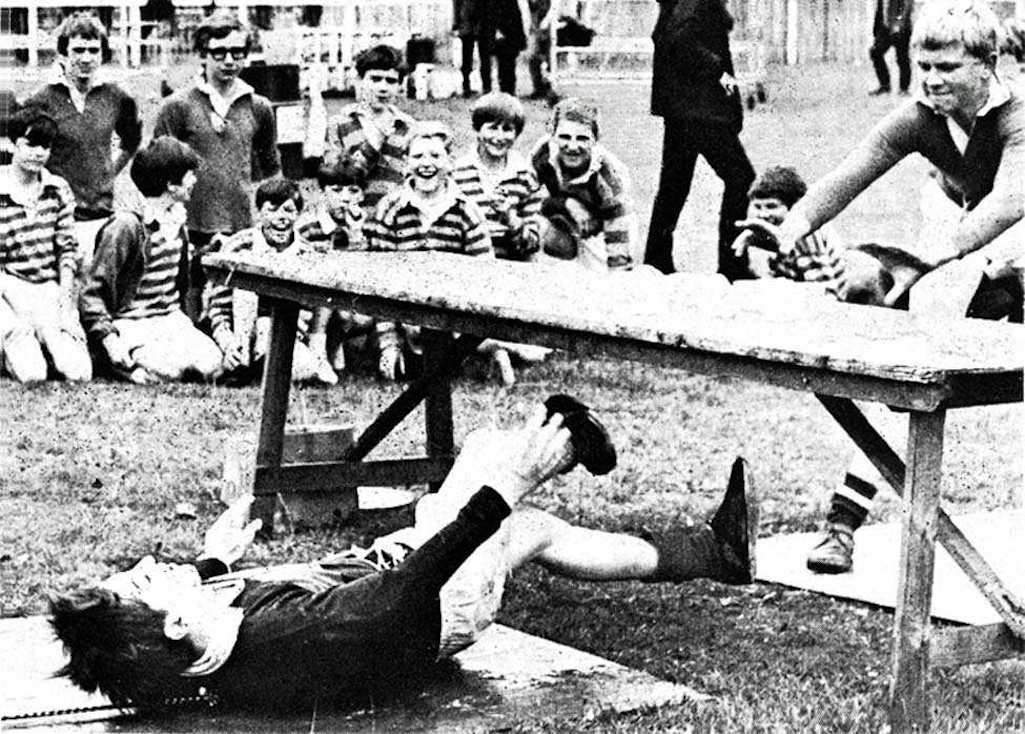
In September 1970, 14-years-old Satindra Dawar from Bentinck Street beat seventy-two other competitors from twelve St Helens schools in a lifesaving competition organised by the Liverpool Shipwreck and Humane Society. Satindra was awarded a silver medal and Patricia Roberts, another Robins Lane pupil, was runner up. However Satindra and Patricia weren't the first Robins Lane pupils to win a medal from the Society as David Greenall had done so in the previous year. In fact David was quite a sportsman. Not only did he hold the school javelin record, but played for the town teams in both football and rugby and represented Lancashire and an English school side against France at Knowsley Road.
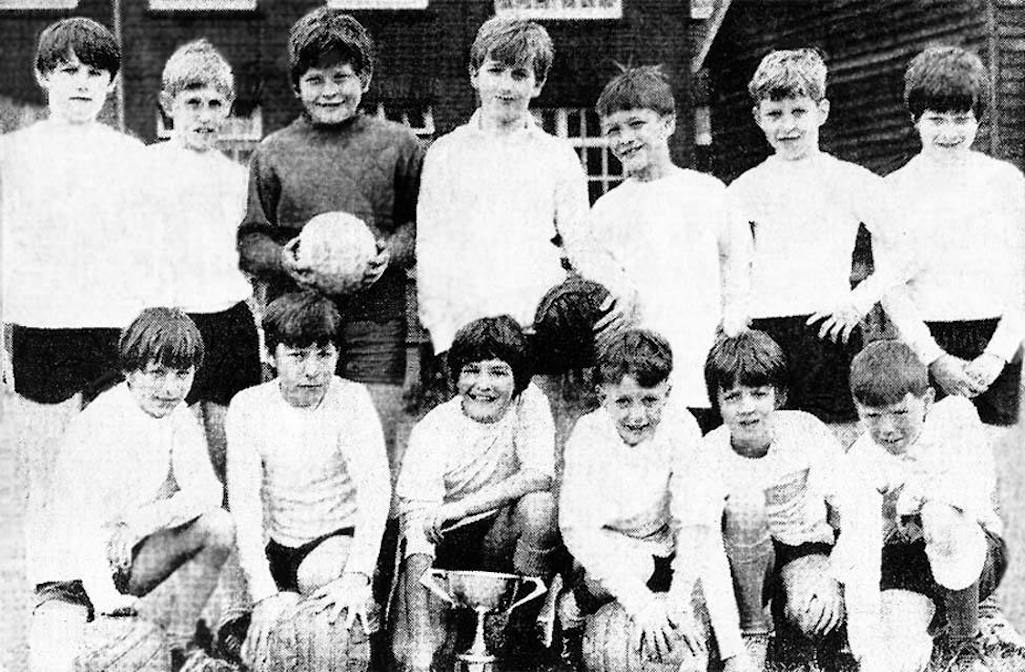
Robins Lane Junior School won the St Helens' Junior Schools soccer trophy during May 1971

Robins Lane won the St.Helens' Junior Schools soccer trophy during May 1971

Robins Lane won the St.Helens' Junior Schools soccer trophy during May 1971
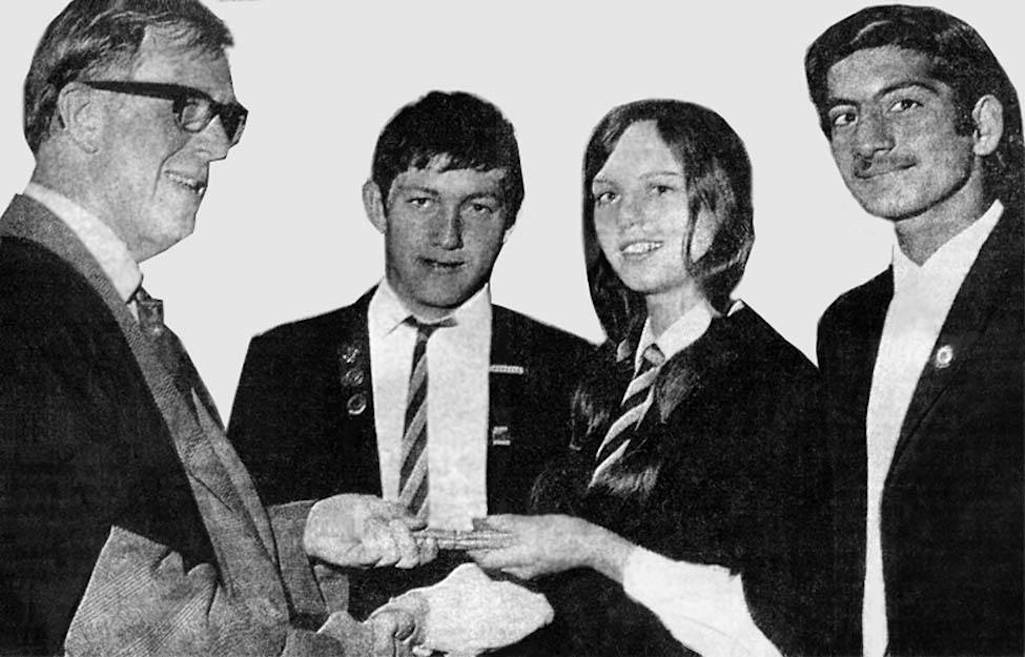
Head Joseph Woods presents a book token to Albert Homer and watches to Karen Porter and Satindra Dawar

Robins Lane headteacher Joseph Woods presents a book token to Albert Homer and watches to Karen Porter and Satindra Dawar

Joseph Woods presents Albert Homer with a book token and watches to Karen Porter and& Satindra Dawar
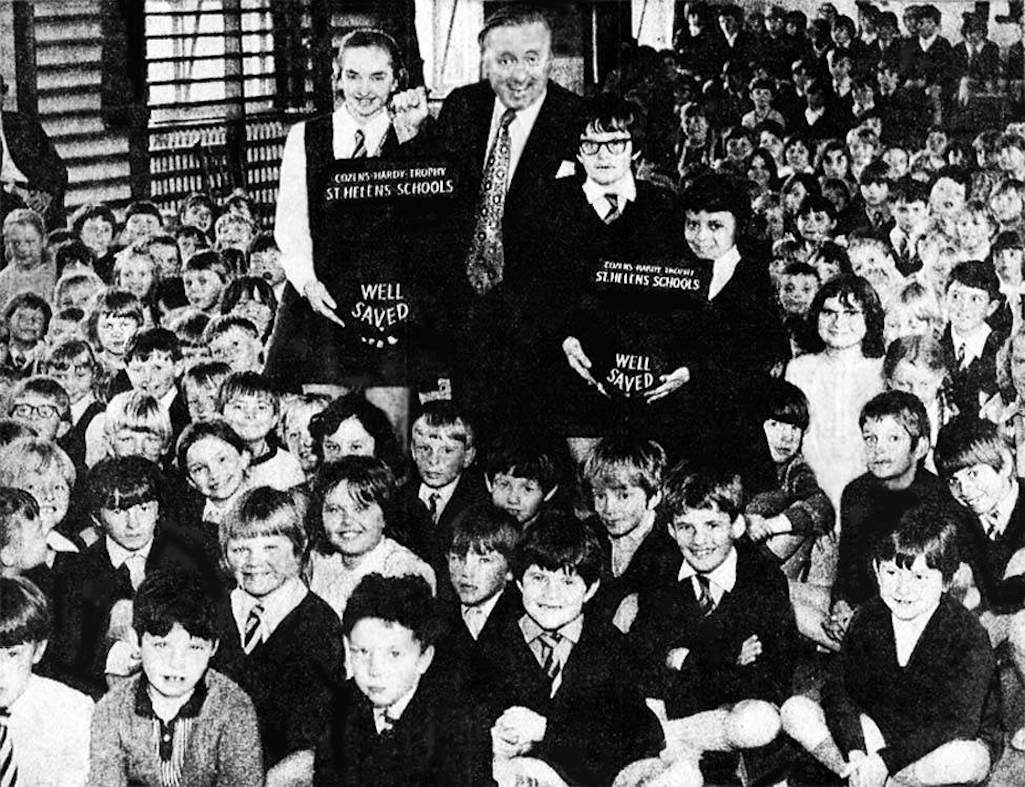
Hugh Lloyd hands the senior Cozens-Hardy shield to Doreen Mercer - Neil Cramond and Jacqueline Cotton hold the junior shield

Actor Hugh Lloyd presents the senior Cozens-Hardy shield to Doreen Mercer - Neil Cramond and Jacqueline Cotton hold the junior shield

Hugh Lloyd hands the senior shield to Doreen Mercer - Neil Cramond and Jacqueline Cotton hold the junior shield
The senior schools had won it for 16 successive years, beating all other secondary schools in St Helens! The juniors also won a junior shield for their savings efforts, which Hugh Lloyd presented to pupils Neil Cramond and Jacqueline Cotton. Frederick Watkin, district commissioner of the National Savings Committee, said "There’s never been another school to beat Robins Lane secondary. I think they’ve all given up trying."
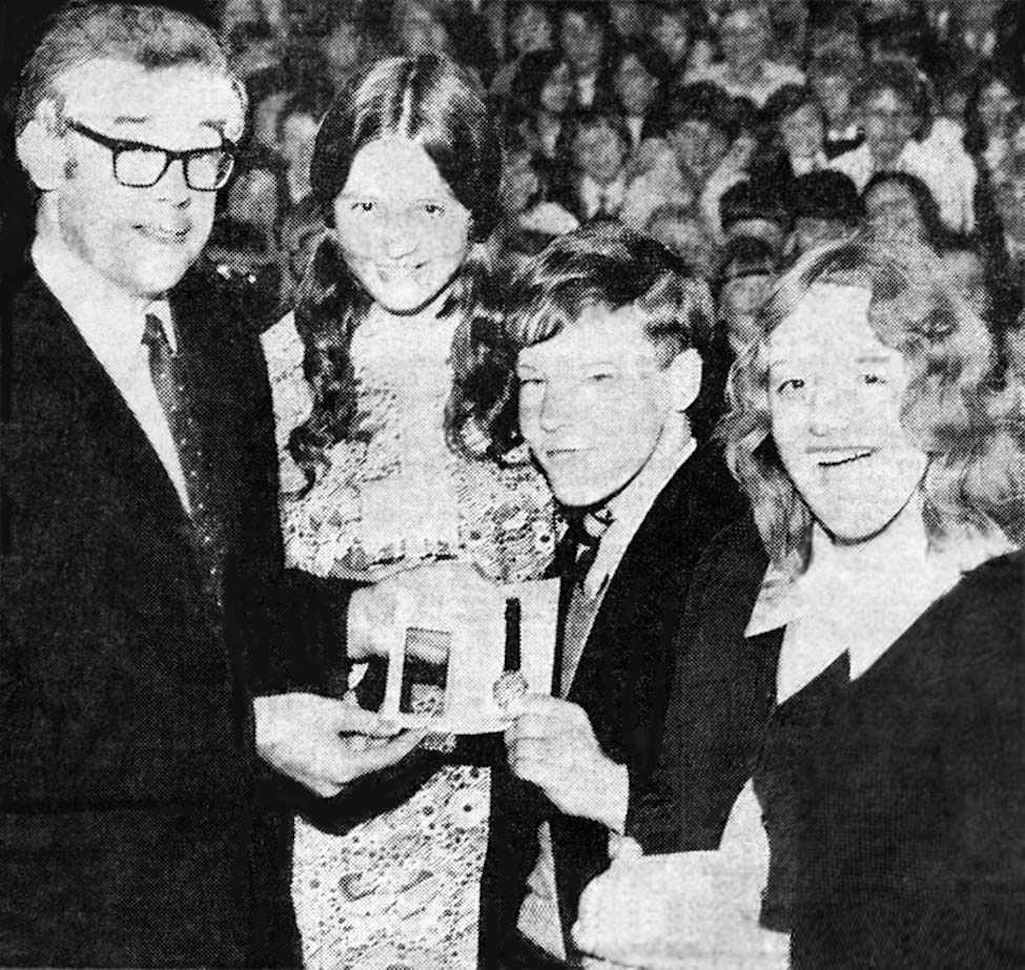
Robins Lane Secondary Head Peter Knight presents watches to Marjorie Axon, Stephen Saxon and Carole Boken

Mr. Knight presents watches to Marjorie Axon, Stephen Saxon & Carole Boken

Watches are presented to Marjorie Axon, Stephen Saxon & Carole Boken
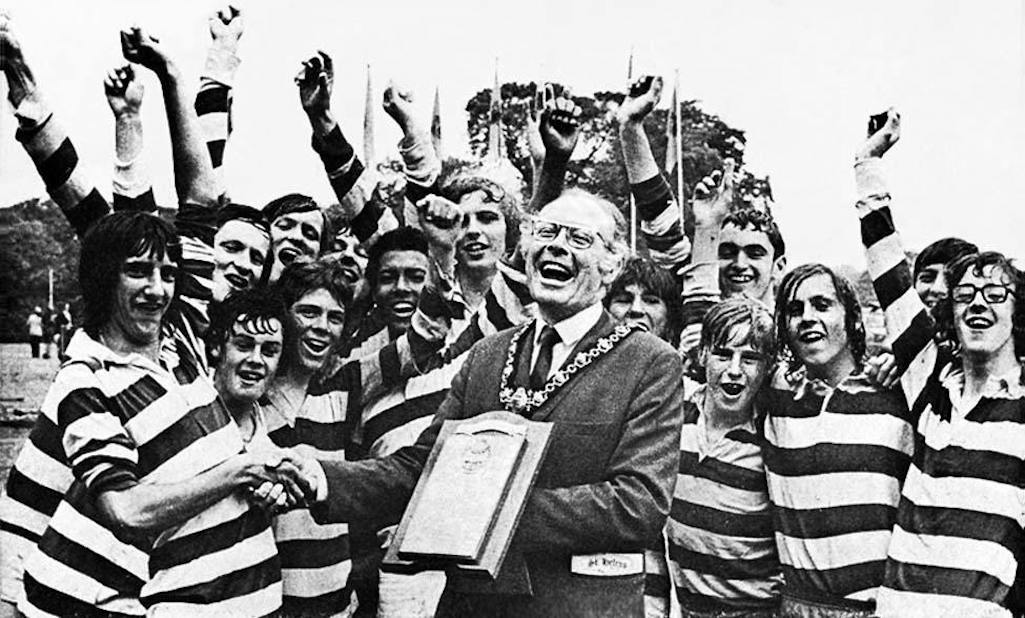
Robins Lane Boys, winners of It's A Knockout at the St.Helens Show in 1972, with Mayor Allan Lycett

Robins Lane Boys, winners of It's A Knockout at the St.Helens Show in 1972

Robins Lane Boys, winners of It's A Knockout at the St.Helens Show in 1972, with Mayor Allan Lycett
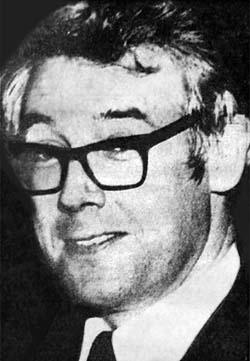
In November 1972, headmaster Peter Knight announced his vision for the school. This was based on equal opportunities or as the St.Helens newspapers liked to call it, a 'unisex' approach. So the St Helens Reporter gleefully described how in the school’s cookery department they had found a dozen "strapping youths" wearing white pinnies and "burrowed up to their elbows in dough". While in the metalwork room they had observed a group of girls, who were contentedly hammering away at trowels and pokers.
In 1973 the school leaving age would be raised to 16, so Mr. Knight felt it important that the less-academically minded children should be occupied with "practical and useful" non-traditional subjects. So sewing and housecraft courses would be made available for boys, along with pottery. His plans also included taking 16-years-olds into factories and offices to see the different trades first hand.
The community work that his predecessor Joseph Woods had begun was expanded, with groups of students making weekly visits to senior citizens, offering help with shopping, washing and cleaning tasks. Pupils also visited a school for the handicapped and helped design adaptations to equipment, while girls attended playgroups all over St.Helens. Peter Knight considered this to be a good training for the world outside of the classroom. This enlightened approach also involved student council meetings, which gave the 636 pupils an opportunity to express their opinions on the way the school was run. "If pupils are treated like responsible people, they’ll act like them", declared Mr. Knight.
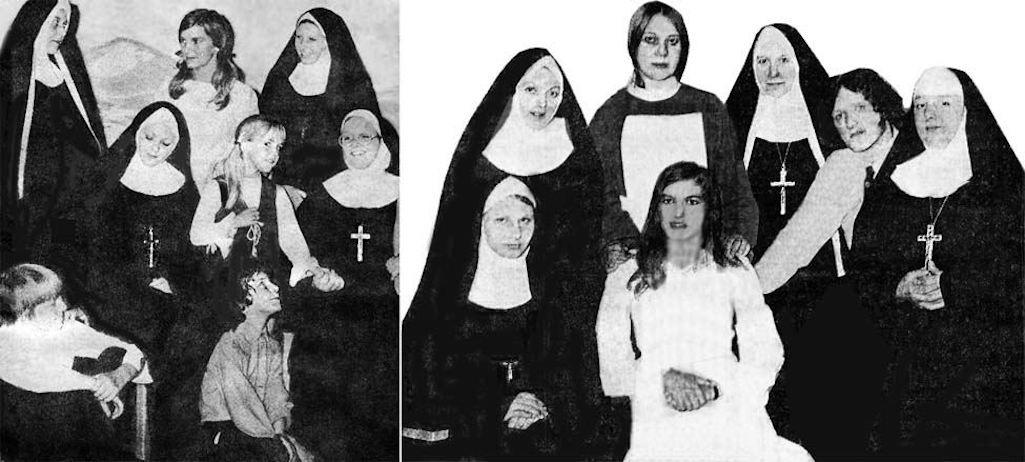
The Rogers and Hammerstein's musical 'The Sound of Music' was performed at Robins Lane in July 1973

The Sound of Music was performed at Robins Lane in July 1973

Sound of Music was performed in 1973
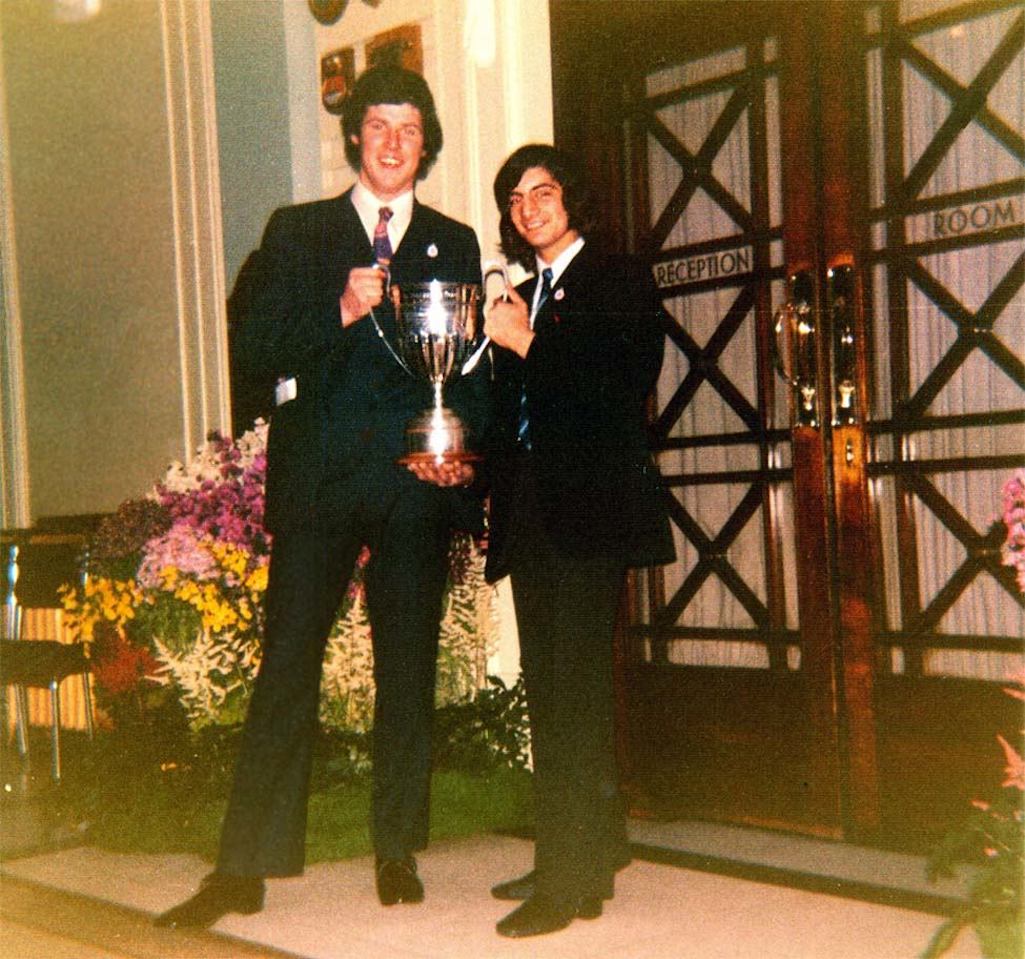
This undated photo shows Satindra Dawar (right) and is believed to be in connection with a lifesaving competition

This undated photograph shows Satindra Dawar (right) of Robins Lane School and is believed to be in connection with a lifesaving competition

Lifesaving winner Satindra Dawar (rt)
The end of year secondary school play in 1974 was Lionel Bart’s 'Oliver' with Stephen Devlin in the lead role, John Ebbs as the Artful Dodger and William Marshall as Fagan. About 90 pupils were in the cast, spending seven weeks in rehearsal. Scaffolding was hired but the technical and art departments within the school created the scenery.
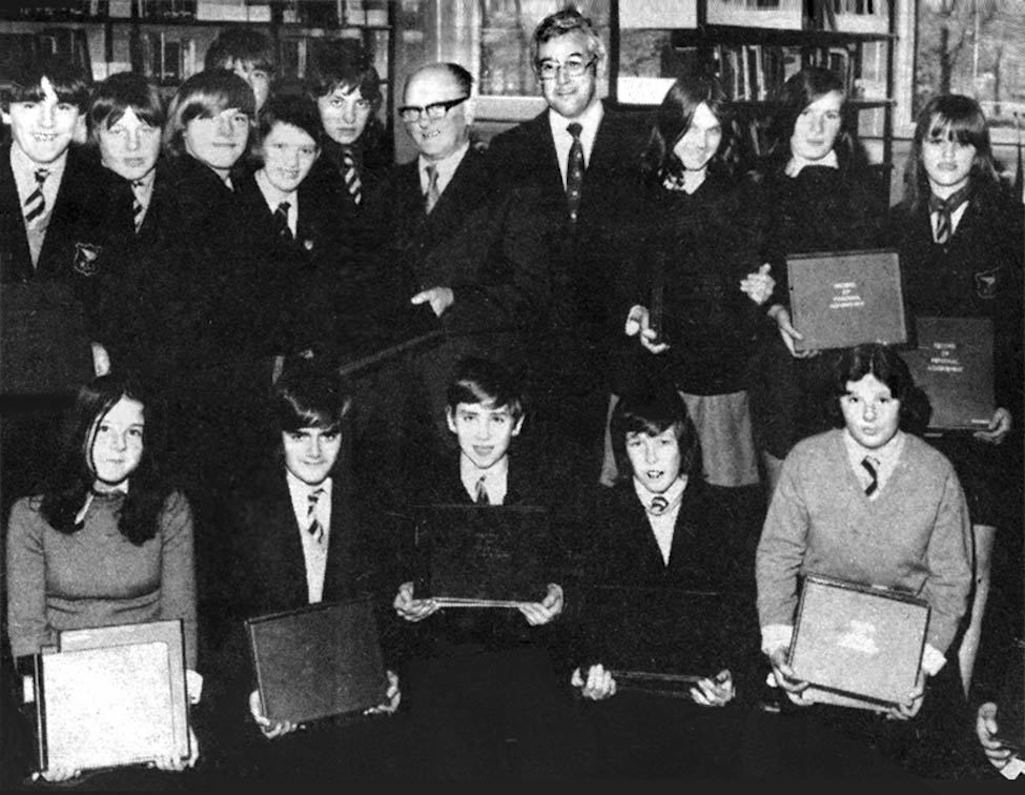
Cllr. Harry Williams and head Peter Knight with pupils participating in the Record of Personal Achievement scheme

Cllr. Harry Williams and Peter Knight with pupils in the RPA scheme

Cllr. Harry Williams and Peter Knight with pupils in the RPA scheme
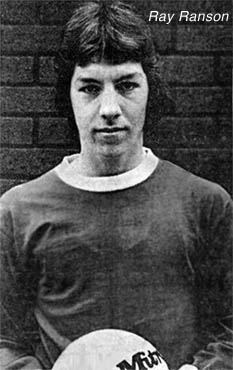
1975 was a good sporting year for Robins Lane with a number of notable successes. Their fourth year basketball team won the St Helens league for their age group. Also a 7-a-side Rugby Union team travelled to Hann, in the then West Germany, to play in a European tournament. Masters Dai Newman and Curtis Johnstone accompanied the lads.
Plus 14-years-old pupil Ray Ranson was impressing with his football prowess. During the year the young lad from Manville Street in Peasley Cross, played for England Schoolboys against Wales, Scotland and Holland, before playing for his country in West Germany in an eight nation tournament. Ray would later play professionally as a defender for Manchester City, Birmingham City, Newcastle United and Reading, before becoming a millionaire businessman.
In December 1975 a cheque for £500 was handed over to Frank Penketh, chairman of the St Helens branch of the Guide Dogs for the Blind Association. Pupils Jacqueline Nolan and Philip Smith handed over the money on behalf of Jupiter House, one of the four school houses which were now named after planets (Moon, Mars & Neptune being the others). The funds were raised by selling various goods to fellow students and were used to buy a guide dog.
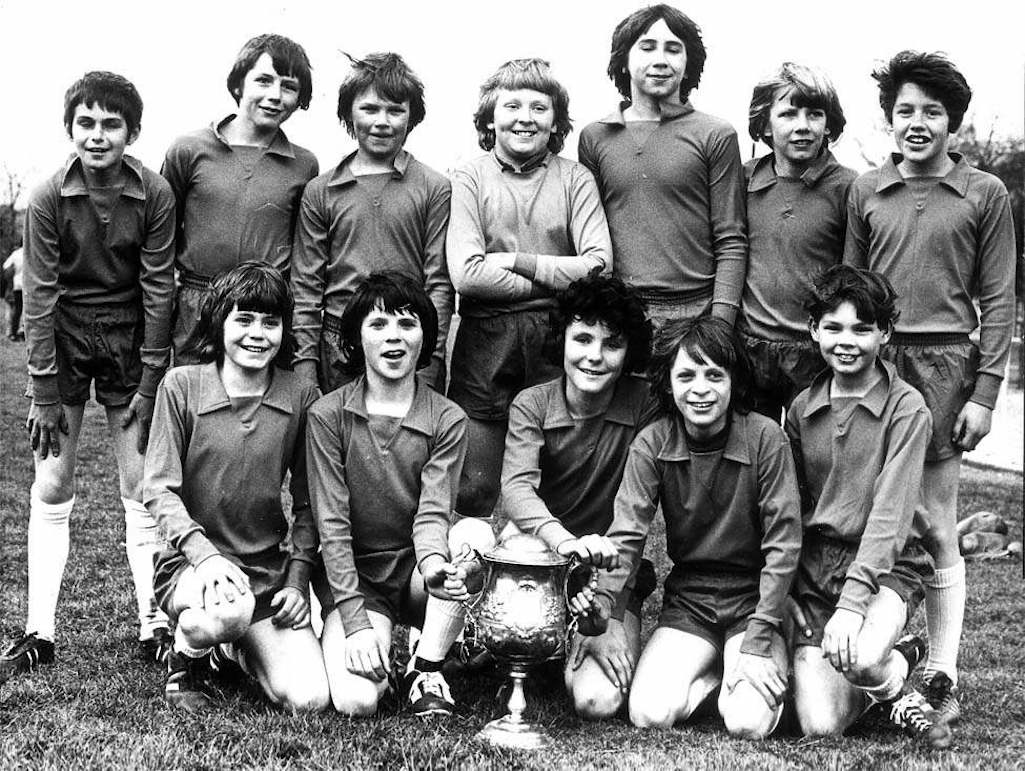
Robins Lane Secondary School first year soccer team in 1976, winners of the St.Helens Schools' Bardsley Cup

First year soccer team in 1976, winners of St.Helens Schools' Bardsley Cup

Winners of the Bardsley Cup in 1976
Much credit for the sporting success of Robins Lane during this period has to come from their PE teachers. Russ Perkins was the Head of PE at the school from the early ‘70s through to the late ‘80s and was joined by Bob Johnston in 1976. Both played non-league football to a high level and were able to pass their success on to pupils within the school.
In May deputy head Phyllis Cole retired and was presented with a tea maker. In September the expanded secondary school - which now had 850 students enrolled - changed its name to Sutton High School, in preparation for a planned relocation from Kinmel Street to Elton Head Road. The Robins Lane juniors, however, would remain in their existing building and continue with their existing name.
Sport successes continued with basketball growing in popularity within the school. During the 1976-77 season, three teams from Sutton High played in the Liverpool & District Schools League for the first time. They were the first St Helens’ school to do so and enjoyed remarkable results. In December 1977, it was announced that Martin Dean of Marshalls Cross Road would tour Canada with the England U15s basketball team. Martin's name and ability was renowned and schools would go to all sorts of lengths to try and stop him. He was persistently fouled but these offences were often not called but Martin would be called for the most innocuous of alleged infringements! Then in March 1978, Sutton High's Under 15 and Under 16 teams won the St Helens Schools Basketball Finals, both beating Rainford sides.
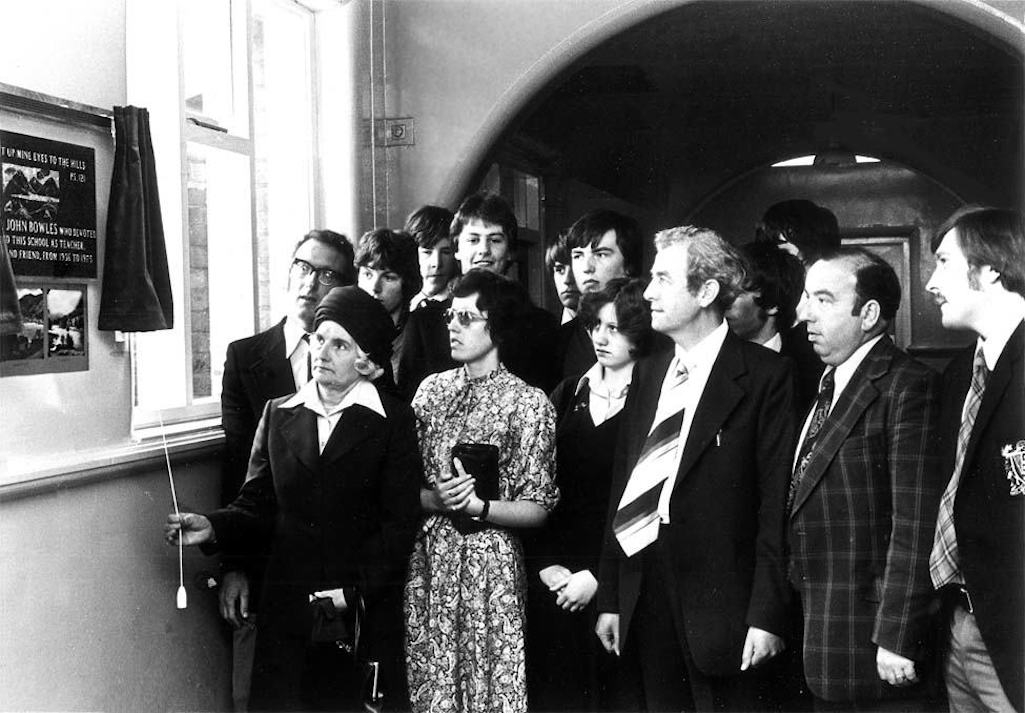
A commemorative plaque to teacher John Bowles, who had taught at Robins Lane from 1936 to1975, is unveiled

A commemorative plaque to teacher John Bowles was unveiled in July 1978

Plaque to John Bowles is unveiled
A new annexe in Elton Head Road was scheduled to open in September 1978, as the first step in relocating the secondary students to new buildings. However concerns were raised about the safety of children having to cross the busy Marshalls Cross Road. An emergency meeting of parents was held at the Robins Lane school in July, called by Councillor Jim Bond, where calls were made for an overpass or crossing. Merseyside County Council had initially argued that a pelican crossing was unwarranted. However as a result of the parents’ protests, they changed their mind and agreed to install one.
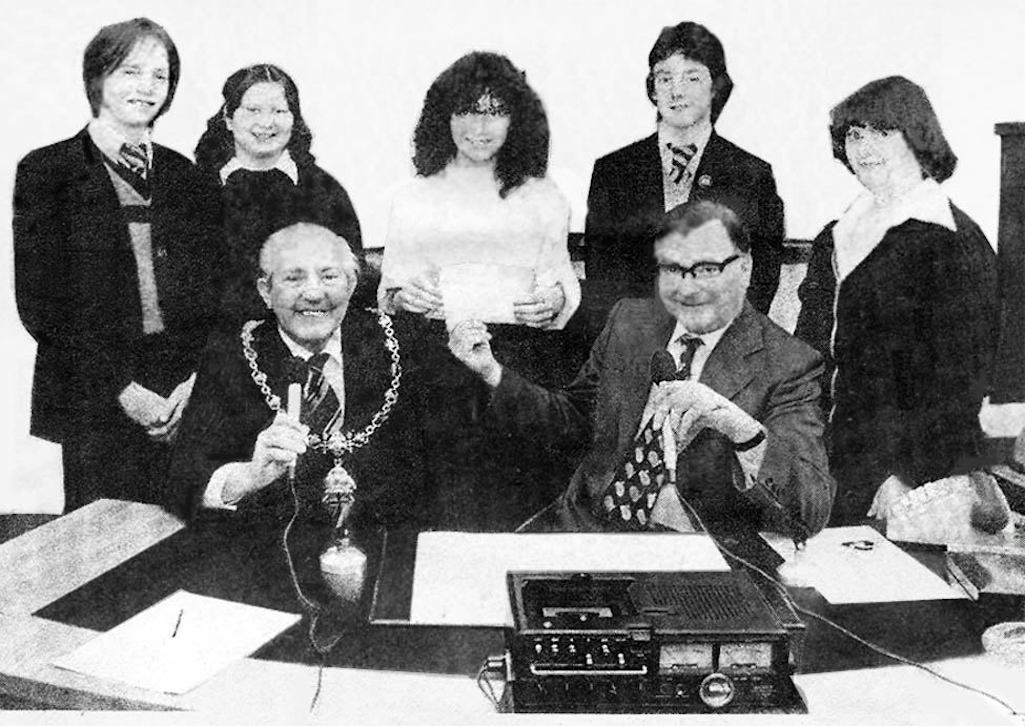
Tom Oakes of National Westminster Bank in St.Helens presents a cheque to Sutton Sentinel in 1979 with Mayor Ronald Halsall

Tom Oakes of National Westminster Bank presents a cheque to Sutton Sentinel

Tom Oakes of National Westminster Bank hands a cheque to Sutton Sentinel
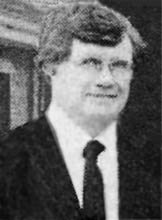
These included interviews with celebrities, such as David Kossoff and Lynne Perrie, plus other well-known individuals, often when they were making appearances in the St Helens' theatres. However through popular demand, this became two sides of local news, which was sent out to between a hundred and a hundred and fifty recipients.
A £4,000 contribution from the Silver Jubilee Fund, £1000 from a National Westminster Bank competition and a £410 donation from the St Helens Boys’ Brigade helped to improve and expand the service. Forty-eight cassette recorders were purchased for blind persons who didn’t have a machine. In December 1980 a St Helens Reporter journalist attended the recording of a Sutton Sentinel and wrote: "The town as a whole has every reason to be proud that there are citizens of the calibre of these young people." Teacher David Edwards was the main voice of the Sentinel for its first 15 years and many staff and students have been involved with its production, sacrificing much of their spare time.

Left: 5th year rugby league team; Right: Cross-Country Under 12s with the Alfred Booth Shield and the Under 14s

5th year rugby league team and cross-country U12s with Alfred Booth Shield

5th year rugby league team and Cross-Country U12s with Alfred Booth Shield

The first centre manager was Frank Lee and Tom Pinnington and Edward Hall were his assistants. In the above photograph (right) Frank is pictured in the new centre in between Councillors Jim Bond and Gerry Parr. On May 2nd the centre received Royal approval when Prince Philip was given a tour, while meeting participants on his Duke of Edinburgh award scheme. Within five years the sports centre would be attracting 50,000 visits a year with a total of 36 staff.
'Faustus D.S.C.' was the name of the 1979 summer play at Sutton High. Directed by B.M. Lazenbury, Mark Seabrook played Dr. Faustus and Beverley Riley was Mephistopheles. 'Round About Christmas' was a remarkable production staged on December 18th 1979 which involved 300 children from the 1st, 2nd and 3rd years. The extravaganza featured drama, dancing and singing with a 200 voice choir which was overseen by head of drama Bernard Lazenbury.
The annual Christmas party for local elderly people went ahead as usual, with funds provided in part by a sponsored silence that had been held in November. About 350 fourth and fifth year pupils had managed to stay quiet for twenty minutes! "We were lenient on coughs and sneezes", said Anthony Devine, Upper School Coordinator.
By now the growing school had 1062 students on its roll, including 27 in its sixth form. The 1980s would bring a school nature reserve, protracted staff dispute with the headmaster, a student Town Hall protest, a threat to axe the school's sixth form and a murder.



